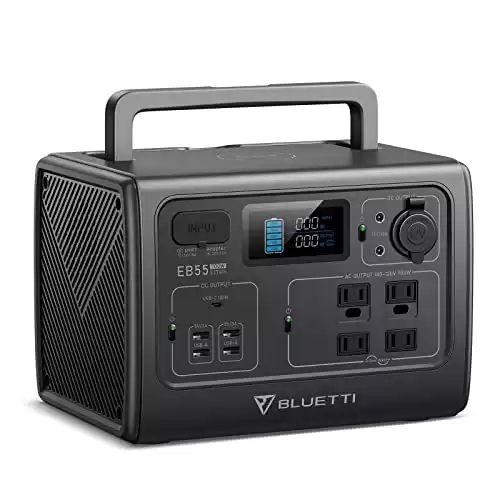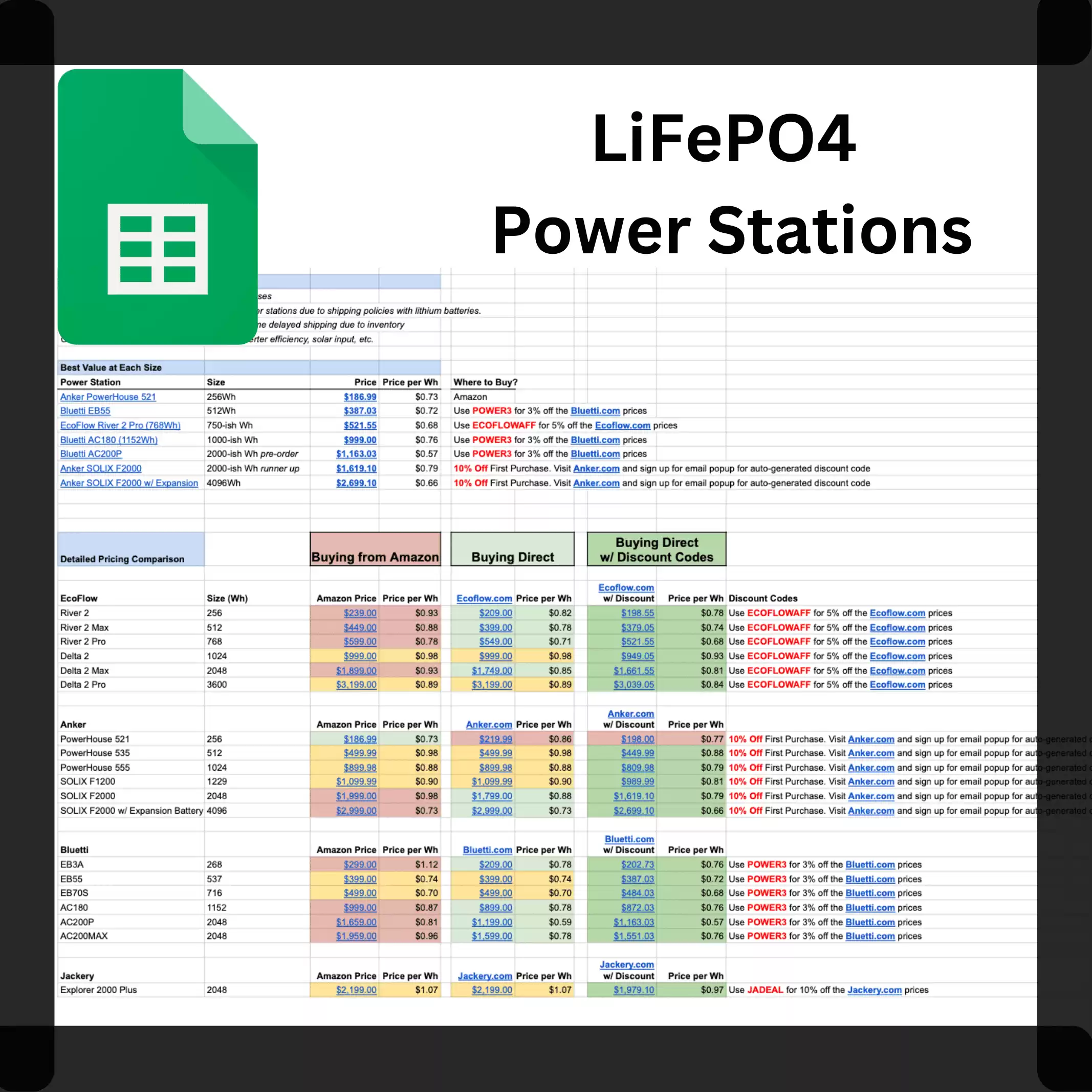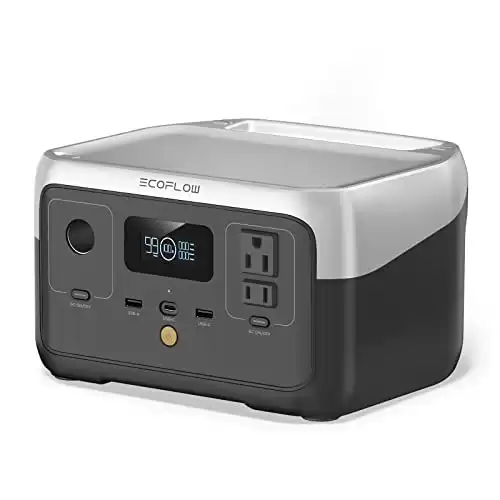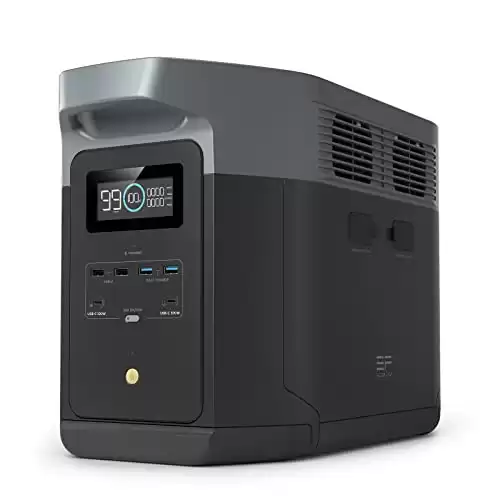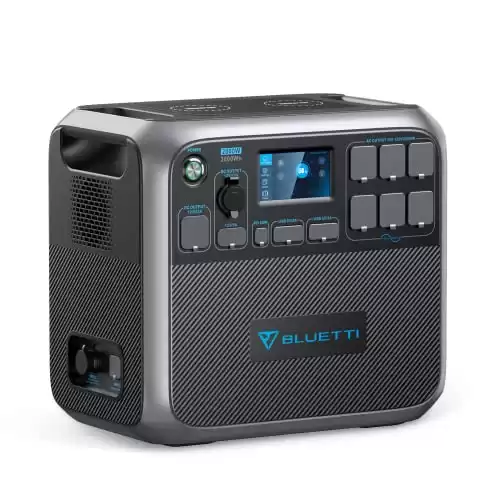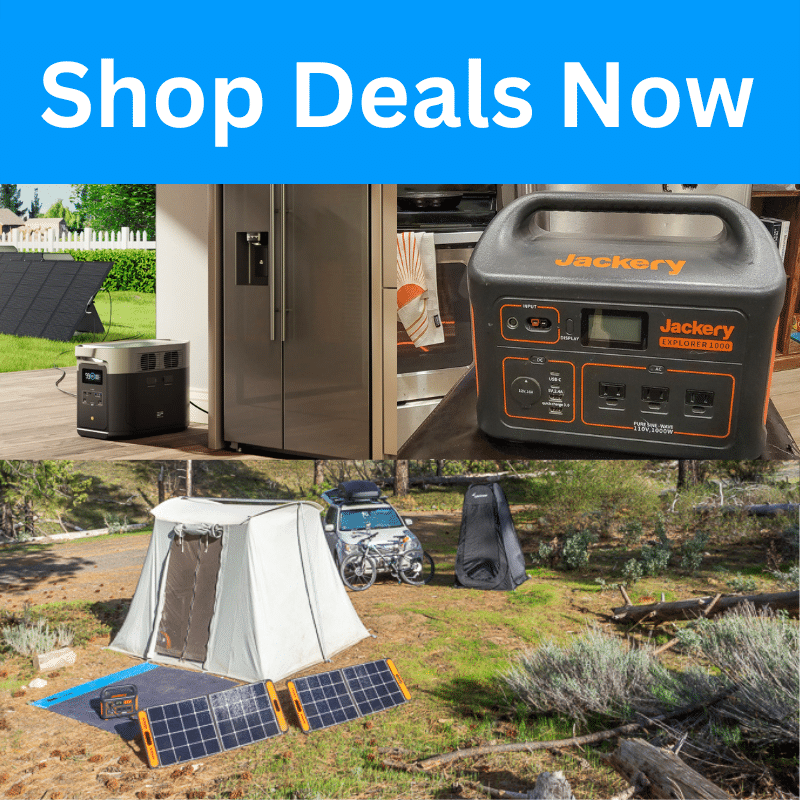LiFePO4 power stations are the best option for portable power in 2023.
But here’s the catch.
With the internet today, Bob from his mom’s basement can slap a label on an imported unit, chuck it on Amazon, and dub it ‘top-quality’ without ever giving it a test run.
Picking a LiFePO4 power station is like shopping for a computer. So many brands, so many specs.
But don’t sweat it, just remember:
- Opt for a power station that has a LiFePO4 battery (Jump to this section for more details)
- Purchase from a reputable company (several brands listed below)
Here’s a quick tool to help narrow down your LiFePO4 power station search:
By the way, EcoFlow made its debut on REI.com allowing you to opt for REI’s hassle-free return program.
And just to clear the air: I’m not in anyone’s pocket. No sponsorships, no freebies, no special deals. Clicking through my links earns me a small amount and supports the site. Thanks for considering them! 🙏
The Best LiFePO4 Power Stations (Solar Generators)
Based on extensive review analysis and personal experiences with customer service, I’ve found that EcoFlow, Bluetti, Anker, and Jackery are the top brands in the market.
Based on my discount code spreadsheet, these are the best LiFePO4 power stations as of August 2023:
Amazon is typically the best place to purchase the Anker 521, but you can verify below.
Cheaper at Bluetti.com when you use POWER3 as your discount code.
Cheaper at EcoFlow.com when you use ECOFLOWAFF as your discount code.
Very similar to the EcoFlow River 2 Pro in terms of price when buying direct. It's cheaper at Bluetti.com when you use POWER3 as your discount code.
Cheaper on Amazon when you apply the $200 coupon code so it's $799. A great deal for this power station.
Significantly cheaper at Bluetti.com (backordered). You can also try and use POWER3 as your discount code.
10% Off First Purchase. Visit Anker.com and sign up for an email popup for an auto-generated discount code
10% Off First Purchase. Visit Anker.com and sign up for an email popup for an auto-generated discount code
Key Takeaways
- Amazon is more expensive for most power stations
- Jackery lags behind
- Save $$$ with discount codes I find
EcoFlow LiFePO4 Power Stations
EcoFlow has the RIVER series for smaller power needs and the DELTA series for larger power requirements. They’ve gained significant popularity over the past few years due to their reliable performance and pushing the benefits of LiFePO4 products.
Key Features of EcoFlow
- Reliable and well-received by users (including Reddit)
- 5 year warranty on most models
- A wide variety of sizes with LiFePO4 batteries
These are also a part of my best portable power stations for 2023.
- Great power station for 1 or 2 people on a casual weekend trip.
- 7.7lbs
- Best for family weekend trips
- 13.3lbs
- Great power station for powering larger gear like drones, cameras, laptops, etc.
- 17.2lbs
- This is the size I use (with 2x 100W solar panels) for working off the grid.
- Powers 90% of appliances (1800W output)
- Expandable to 3000W with extra battery
- Great for home backup, can run a fridge and other large appliances
- Can be expanded to 6kWh (From 2kWh)
- Best for emergency backup and major natural disasters
- Can also be used for RV
- Some use it for a food truck
Anker LiFePO4 Power Stations
Anker is one of the most popular electronics manufacturers in terms of power and charging. If you’ve ever bought extra charging cables for your phone, you likely have an Anker product without realizing it.
They have a 5-year warranty on their power stations making it the longest in the industry.
All of Anker’s current power stations utilize LiFePO4 battery technology.
- Great power station for 1 or 2 people on a casual weekend trip.
- Best for family weekend trips
- This is the size I use (with 2x 100W solar panels) for working off the grid.
- Powers 90% of appliances (1800W output)
- Expandable to 3000W with extra battery
- Great for home backup, can run a fridge and other large appliances
- Best for emergency backup and major natural disasters
- Can also be used for RV
- Some use it for a food truck
Bluetti Power Stations with LiFePO4
Bluetti currently offers a 4-year warranty, although I anticipate they’ll extend it to 6 years soon to align with the other top brands.
Bluetti’s current selection all feature LiFePO4 battery chemistry.
- A bit pricey for the size
- Great for powering a weekend trip for couples
- Great option for family weekend trips
- Better value compared to the Bluetti EB3A (268Wh)
- Great power station for powering larger gear like drones, cameras, laptops, etc.
- This is the size I use (with 2x 100W solar panels) for working off the grid for weeks at a time
- Expandable to 8912Wh
- Best for emergency backup and major natural disasters
Jackery Power Stations with LiFePO4
Jackery is late to the party and only recently (mid-2023) released their first LiFePO4 battery in the Jackery 2000 Plus.
Their warranty has also been extended to 5 years (you need to register the product to go from 3 years to 5 years).
All of the other Jackery power stations, including the newer 3024Wh, have the NCM
Benefits of LiFePO4 Power Stations vs NMC Batteries
LiFePO4 offers numerous advantages over NMC, such as:
- Longer battery lifespan
- Lower cost due to battery chemistry
- 100% depth of discharge
- Superior stability and safety
The primary benefit of LiFePO4 vs NMC is its long life span compared to the alternative NMC battery found in many pre-2022 power stations. In addition, the battery chemistry is cheaper than NMC.

Another benefit is it has a 100% depth of discharge, meaning you can drain an LFP battery to 0% without damaging it, whereas it’s not advised to discharge NMC batteries below 10 to 20%.
The downside of LiFePO4 is they are heavier because they are less energy dense (ie: you need a larger battery pack for the same capacity).
The Downside: Weight/Size
For example, a Jackery 2000 Plus with LiFePO4 chemistry is 61.5lbs compared to the Jackery 2000 Pro with NMC is 43lbs. This is why you often see larger battery packs come with wheels.
However, EcoFlow has a Delta 2 Max with LiFePO4 at 50lbs and the NMC version is 48lbs, so they did something with the design to make it a similar weight.
Most large power stations don’t move very far. Mine, for instance, only moves from my SUV to just outside it or from my closet to the living room during a power outage.
What’s the Right LiFePO4 Power Station for You?
I categorize power stations into three main uses: weekend trips, special uses, and emergency backup.
Power Station for Camping Trips (250Wh to 500Wh)
If you’re just powering your phone, camera, and other small electronics, you can get a 256Wh power station and be fine. If you have 4+ people or going for several days, maybe upgrade to the 500Wh capacity.
Power Stations for Cpaps, Long Trips, and Other Special Uses (750Wh to 1500Wh)
For longer trips or when you need to power more energy-intensive devices like a CPAP machine, laptops, or camping fridges, you might want to look at the 750Wh to 1300Wh range.
These power stations can handle larger loads and last longer between recharges, making them ideal for extended trips, remote work setups, or even field work that requires certain tools.
Currently, the best value on the market. You can add on an additional 1,000 or 2,000Wh for maximum flexibility so you don't have to buy a new power station down the road. (EcoFlow Delta 2 Smart Extra Battery)
You should budget at least one 160W solar panel which should keep you topped up in sunny conditions.
For heavy usage, a Delta 2 Max with solar is going to be much more convenient.
LiFePO4 for Home Backup, Large Appliances, Prepping (2000Wh +)
For those preparing for emergency situations or requiring a backup power supply for their home, a power station with a capacity of 2000Wh will be more suitable.
These power stations can run large appliances like refrigerators, freezers, and even AC systems. Additionally, they can keep other home essentials running like lights, medical equipment, sump pumps and more.
In addition, the best power stations for Starlink are in this range.
How Large of a LiFePO4 Power Station to Get?
Power stations are expensive, and upgrading capacity isn’t available except for larger power stations (1,000Wh for EcoFow, 2,000Wh for others).
This means, if you buy a Jackery 1000 Explorer like I did, then you’re stuck with 1000Wh capacity and the only way to upgrade it is to buy another expensive unit OR buy solar panels which may or not work in your situation.

So, I always recommend sizing up.
Identify Your Devices and their Power Consumption
Make a list of all the devices you want to power (below are high level estimates)
- Cell Phone: 5 watts (per hour)
- Cameras, Drones etc: 20 to 60 watts
- Laptop: 30 to 50 watts
- Cpap machine: 50 watts
- Camping fridge: 30-50 watts
- Home fridge: 60-150 watts
Calculate the Usage Time
Next, calculate how long you’ll be using or charging each device per day. If you are going to be charging your laptop while working all day, you’ll need (40 watts * 8 hours = 320 watt hours).
Consider the Efficiency of the Power Station
Most power stations use an inverter to convert DC power stored in the battery to AC power that most devices and appliances use. However, this process isn’t 100% efficient. Good brands tend to range between 80 and 85% efficient. Thus, your EcoFlow 1000 is now an EcoFlow 850.
Choosing the Best LiFePO4 Power Station: Final Thoughts
Choosing the right power station depends on your specific power needs and the nature of your devices. LiFePO4 power stations, with their extended lifespan and cost-efficiency, are a standout choice. Notable brands offering excellent options include EcoFlow, Anker, Jackery, and Bluetti.
Although the size and weight of LiFePO4 power stations may seem a drawback, the benefits often outweigh these issues. Remember, the key to an informed choice lies in accurately understanding your devices’ power consumption and including a safety margin in your calculations.
As technology advances and LiFePO4 batteries gain prevalence, consumers can expect a wider range of high-quality options. Take the time to research and choose a power station that best suits your needs.
I compare current Amazon prices vs buying direct with active discount codes.
Key Takeaways
- Amazon is more expensive for most power stations
- Save $$$ with discount codes I find


